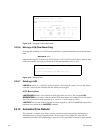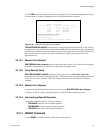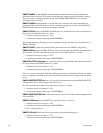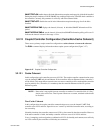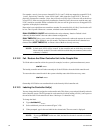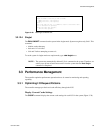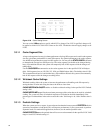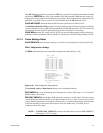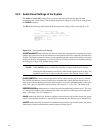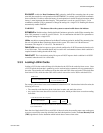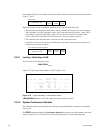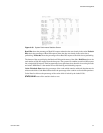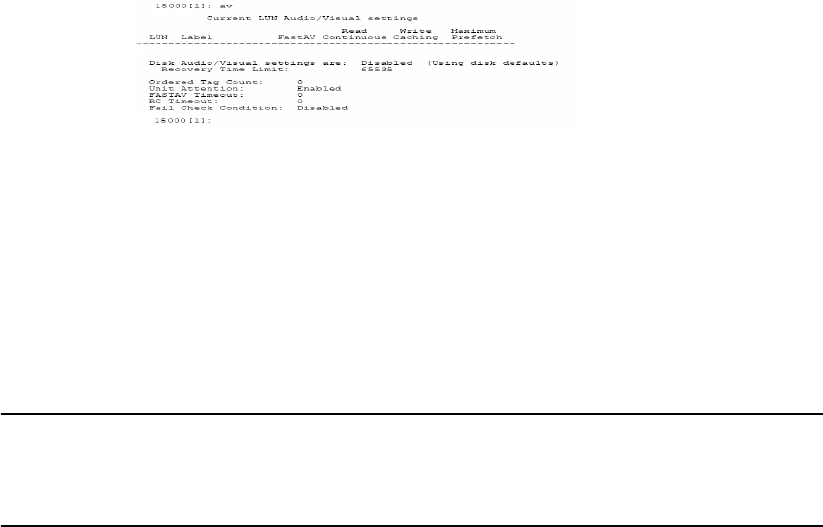
58 007-5510-002
3.3.2 Audio/Visual Settings of the System
The audio and visual (AV) settings of the system and the disks can be tuned to provide better
performance and a lower latency. The writeback and prefetch settings for each LUN are changed with
the CACHE command.
The AV command displays information about the audio/visual settings of the system (Figure 3–31).
Figure 3–31 Current Audio/Visual Settings
AV FASTAV=ON|OFF enables/disables the disk fast audio/video read options for streaming data. When
enabled, the system will start the data transfer for read operations before all of the disk commands have
finished. This feature reduces the latency for read operations but the system will be unable to check the
integrity of the data. This parameter is saved on a LUN by LUN basis. Use LUN=X command to change
the settings for a single LUN. Default setting is OFF.
NOTE :
When FASTAV mode is enabled, the controller no longer checks data in real-time.
Changing the disk parameters can adversely affect the I/O operation of the system. This
parameter should only be adjusted when the system is idle. Default setting is OFF.
FASTAVTIMEOUT=x sets the timeout before the FASTAV option activates on a host read command.
The FASTAV mechanism is not used until the host command takes longer than the timeout value. A
value of zero indicates that the system starts the data transfer as soon as a minimum number of drives are
ready. This value is in 100 millisecond increments. The range for “x” is 0 to 255. The default is 50.
ORDEREDQUEUE=x enables the use of ordered tags when communicating with the drives. The value
“x” indicates the number of disk commands that can be sent before an ordered tag must be sent to the
disks. Valid range is 0 to 255. Default is 0.
UA=ON enables the initial Unit Attention condition when an initiator logs into the system; the system
reports a Unit Attention condition on the first SCSI command after the initiator logs in. Default is ON.
UA=OFF disables the initial Unit Attention condition when an initiator logs into the system; the system
automatically clears the unit attention condition when an initiator logs in.



